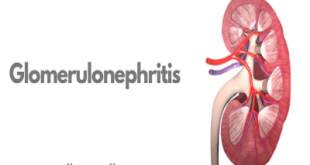Definition
Gastroschisis is a relatively uncommon condition that occurs in approximately 1 in 5,000 live births. It is one of a group of birth defects known as abdominal wall defects, which occur very early in gestation and are characterized by an opening in the abdominal wall of the fetus.
Most cases of fetal gastroschisis involve the intestine and other abdominal organs herniating (protruding) through an opening (hole) in the abdominal wall and spilling out into the amniotic fluid around the fetus. This opening is usually found to the right of the belly button. As a consequence, the unprotected intestine becomes irritated, causing it to swell and shorten.
The longer the exposure to amniotic fluid, the more severely the intestine can become damaged. In addition, as the fetus continues to develop, the tight opening may squeeze the blood supply to the intestine or cause it to twist around itself. Either of these consequences can cause intestinal blockage, loss or malfunction and lead to long-term feeding problems after the baby is born.
A baby with gastroschisis
History of Gastroschisis
The term gastroschisis is derived from the Greek word laproschisis, meaning “bellycleft.” It was used in the 19th and early 20th centuries by teratologists to designate all abdominal wall defects. No clear distinctions were made between abdominal wall defects until 1953 when Moore and Stokes classified them based on their appearance at birth.
They suggested that the term gastroschisis be reserved for those cases in which the defect is adjacent to the normally inserted umbilical cord and there is no evidence of a sac covering the extruded viscera. Although the first report of a case of gastroschisis was in 1733, the first report of successful closure of a small abdominal wall defect was not until 1943 by Watkins, a surgeon from Virginia.
Gastroschisis risk factors
Some of the risk factors for developing gastroschisis include:
- Teenage pregnancy
- Smoking during pregnancy
- Drug or alcohol abuse during pregnancy
- The use of vasoactive over-the-counter drugs (such as pseudoephedrine) has also been associated with gastroschisis.
- Other risk factors associated with gastroschisis include low birth weight, exposure to environmental toxins and the use of oral decongestants during pregnancy.
Causes of Gastroschisis
Gastroschisis occurs in the early stages of pregnancy. During all babies’ development, their organs may develop outside their body at first, but then they usually return inside. In cases of gastroschisis, the muscles making up the baby’s abdominal wall don’t form correctly, and thus a hole develops and allows the intestines and sometimes other organs like the stomach and liver to extend outside the body. The organs will usually be on the baby’s right side of her belly button. The intestines are not protected by the amniotic fluid when this happens, so they can become irritated and swell, twist, or shorten.
The causes of gastroschisis are unknown but may be related to our genetics or a combination of other factors, including environmental or food or medication the mother uses during pregnancy.
Some newer issues researchers have found that may increase the risk of a baby developing gastroschisis are:
- Being a younger mother: Teenage moms have been more likely to have a baby with gastroschisis than older moms.
- Using tobacco or alcohol: Both of these drugs have an effect on increasing the risk of gastroschisis.
Symptoms
A baby born with gastroschisis will lose heat and water very quickly from the intestines, causing:
- Too much water loss (dehydration)
- A body temperature that gets too low (hypothermia)
Other organs may stick out along with the intestines, including the baby:
- Stomach
- Gallbladder
- Uterus
- Ovaries
- Testes
- Bladder
Complications of Gastroschisis
- A small number of babies with gastroschisis (about 10%) may have parts of the intestines that did not develop normally in the womb. With these babies, their intestines may not work normally even after the organs are put back inside the abdominal cavity.
- The increased pressure from the misplaced abdominal contents can decrease blood flow to the intestines and kidneys. It can also make it difficult for the baby to expand the lungs, leading to breathing problems.
- Another complication is bowel death necrosis. This occurs when intestinal tissue dies due to low blood flow or infection.
- This condition is apparent at birth and will be detected in the hospital at delivery if it has not already been seen on routine fetal ultrasound exams during pregnancy. If you have given birth at home and your baby appears to have this defect, call the local emergency number (such as 911) right away.
Diagnosis and test
Gastroschisis can be found during pregnancy or after your baby is born.
Diagnosing gastroschisis during pregnancy
You may find out your baby has gastroschisis from a routine prenatal test (medical tests you get during pregnancy) that checks your baby for birth defects. Your health care provider also may check your baby for gastroschisis if you have a condition called polyhydramnios during pregnancy. Polyhydramnios is when you have too much amniotic fluid.
Your provider may use these tests to diagnose gastroschisis during pregnancy:
A fetal echocardiogram (also called a fetal echo)
This test uses ultrasound to make a picture of your baby’s heart while still in the womb. Some babies with gastroschisis also have heart problems.
Maternal blood screening (also called quad screen)
This screening test is called a quad screen because it measures four substances in your blood: alpha-fetoprotein (also called AFP), estriol, human gonadotropin (also called hCG) and inhibin A. The test is done at 15 to 22 weeks of pregnancy. If you have high levels of AFP, your baby may have gastroschisis.
Magnetic resonance imaging (also called MRI)
This is a medical test that uses a large magnet and radio waves to make a detailed picture of the inside of the body.
Ultrasound
This test uses sound waves and a computer screen to show a picture of your baby inside the womb. If your baby has gastroschisis, an ultrasound may show the bowels floating outside of your baby’s belly. Health care providers may find gastroschisis as early as 10 weeks of pregnancy on ultrasound, but it’s most often diagnosed between 18 and 20 weeks. You may need several ultrasounds during your pregnancy so your provider can monitor the intestines and other organs as your baby grows, checking for any changes to them.
Diagnosing gastroschisis after your baby is born
If gastroschisis isn’t found during pregnancy, your provider can diagnose it at birth.
Treatment for Gastroschisis
After birth, your baby is immediately moved from the delivery room to an adjacent stabilization room, where breathing status is assessed, an IV is placed and a nasogastric (NG) tube (a tube that runs through the nose) is placed to decompress the intestine- this prevents reflux of gastric contents into the lungs. Throughout the process, careful positioning of the baby is critical to maintaining adequate blood flow to the intestine.
Repair of gastroschisis involves returning the extra-abdominal contents back into the abdominal cavity, followed by abdominal wall closure. This can either be performed with an immediate primary gastroschisis repair or, more commonly, a repair was done in a series of steps (staged repair), depending upon a postnatal assessment of the condition of the exposed intestine.
Primary gastroschisis repair
At the time of delivery, the exposed abdominal contents are placed in a moistened “bag” for your child’s transfer to the N/IICU. In a primary gastroschisis repair, your baby undergoes surgical repair immediately upon admission to the N/IICU. The intestine is returned to the abdominal cavity and the abdominal wall is closed during one procedure.
Ventral Wall Defect Silo Bags
Staged gastroschisis repair
Prenatal exposure of the fetal intestines to the amniotic fluid can be associated with bowel dilation and inflammation, thus making primary repair unfeasible. If the amount of bowel outside the abdomen is especially large or dilated or if your baby’s condition is unstable, a staged (done in several steps) approach will be performed over an average of five to 10 days.
 Diseases Treatments Dictionary This is complete solution to read all diseases treatments Which covers Prevention, Causes, Symptoms, Medical Terms, Drugs, Prescription, Natural Remedies with cures and Treatments. Most of the common diseases were listed in names, split with categories.
Diseases Treatments Dictionary This is complete solution to read all diseases treatments Which covers Prevention, Causes, Symptoms, Medical Terms, Drugs, Prescription, Natural Remedies with cures and Treatments. Most of the common diseases were listed in names, split with categories.







